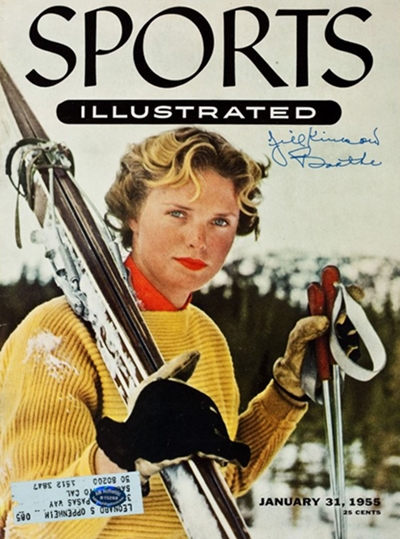switzerland
NOTD: Shark Statue Dumped Into Swiss Lake

If you fancy swimming with the sharks without the worry of them taking a chunk out of you, a dip in Lake Neuchâtel would be ideal. Lurking in the depths of the murky water is a terrifying shark statue that’s been scaring divers half to death in Switzerland. The monstrous model sports a truly chilling grin that flashes every inch of its huge jaws while its pectoral fins look as though they are in flight mode. So, it’s no wonder those poor divers have been startled. The shark statue sits at the bottom of the lake in Romandy and appears to be floating, thanks to its supporting structure. It has been suggested that it was dumped there by a prankster, keen to convince locals the film Jaws is actually real. Their stunt hasn’t been doing a bad job at that either, as it’s forced a host of divers to do a panicked double take. Footage of a gang of underwater explorers coming across the petrifying prop has been doing the rounds on social media. [P]eople have been left in stitches by the creativeness of the alleged mischief maker. Then, again, it would hardly have the same effect if you parked it at a bus stop, would it? Sleuths on Reddit somehow managed to recognise the shark and said it was used as a prop in the film Choc au Lac! It is featured in one of the scenes from the 1975 movie, which was created by a group of 176 kids from Neuchâtel. The flick was, of course, about a giant shark that [terrorized] the town but, was unfortunately never finished.

[Even] the amateur detectives on Reddit can’t work out how the shark statue made its way down to the bottom of the lake. It is suspected that the 20ft long replica, made of [fiberglass], was probably dumped in the lake as a prank. Other theories include that it was put there as an unofficial tourist attraction or to create a hype for the unfinished film. To be fair, it has become a hot-spot for divers who want to see how scary it actually is, in the flesh, since 2002. Social media users haven’t been as enthusiastic about taking a trip down to the depths, even if it is just a statue.
One said: “Good thing the water is so murky so nobody can see me s**t my pants.”
Another wrote: “Now, imagine being the first dude that came across this.”
A third added: “This picture makes me feel sick to my stomach, like, visceral fear inside me is telling me to run as far as I can.”
Others were more intrigued by the elaborate plan behind abandoning the shark [in the lake], nicknamed Bruce by locals, .
Someone said: “I can’t tell if I want to shake the hand of whoever made it or run away from them.”
Another added: “What sick f**k thought this was a good idea?!”
At least you now know that thing whipping around your legs in Lake Neuchâtel is just a prop. Or is it?
Divers Given Scare
Olivia Burke
LadBible

News of the Day
Hans 2021 Movie Draft: Round Three-Pick Five-The Other Side Of The Mountain 1975

Apple Pie in Sun Valley (S.I. Archive)
Hanspostcard has a movie draft challenge. This is my Round Three pick.
Category: Documentary/Sports
Film: The Other Side of the Mountain
“You know where you’ll find sympathy in the dictionary, don’t ya’? Between shit and suicide.”
Directed by Larry Peerce, the movie is based on the 1966 novel A Long Way Up by E. G. Valens, written about national slalom ski champion (1955) and a 1956 U.S. Olympic skiing team candidate, Jill Kinmont. Produced by Edward Feldman, the screenplay adaption was written by David Seltzer. Jill is played by Marilyn Hassett and, Beau Bridges plays Olympic skiing team member (1952) and stunt pilot Dick “Mad Dog” Buek. Dabney Coleman plays Coach Dave McCoy and Bill Vint plays Buddy Werner. Belinda Montgomery plays Audra Jo or “A.J.”, Jill’s best friend, Nan Martin plays June Kinmont and William Bryant plays Bill Kinmont. Griffin Dunne has a small part.
The film spans Jill’s slalom races to her national championship, her best friend’s polio contraction, her accident while attempting to win the Alta, UT, Snow Cup, her hospital stay, her slow rehabilitation, her heartbreak from the losses of two dear men and her triumph at becoming a teacher.

Dick Buek was killed in a plane crash on November 3, 1957, two days shy of his 28th birthday (Club of 27?). Buddy Werner was killed in an avalanche in Switzerland on April 12, 1964.
Released July 25, 1975, the film was panned by critics for being too much of a tear-jerker. That may be true but, she did have a really hard time. The sequel was released February 10, 1978 and was panned even worse. I saw them in reverse order. I was only nine years old when the first movie came out so, I didn’t get to see it until I was an adult. I saw Part II, first, when it was released to television. I enjoyed both films despite the bad reviews. Sometimes, bringing someone’s life story to the big screen is handled poorly. Jill passed away February 9, 2012.
Additional Reading:
An Amazing Interview/Jill Kinmont Boothe (Ezine Articles)
The Mad Dog of Donner Summit (Sierra Sun)
The Death of a True Hero (Wired)
The Complete Movie
Throwback Thursday: World Wide Web 1993

And, the world was never the same. ~Vic
On April 30, 1993, four years after publishing a proposal for “an idea of linked information systems,” computer scientist Tim Berners-Lee released the source code for the world’s first web browser and editor. Originally called Mesh, the browser that he dubbed WorldWideWeb became the first royalty-free, easy-to-use means of browsing the emerging information network that developed into the internet as we know it today.
Berners-Lee was a fellow at CERN, the research organization headquartered in Switzerland. Other research institutions like the Massachusetts Institute of Technology and Stanford University had developed complex systems for internally sharing information and Berners-Lee sought a means of connecting CERN’s system to others. He outlined a plan for such a network in 1989 and developed it over the following years. [He] wrote and published the first web page, a simplistic outline of the WorldWideWeb project, in 1991. Simple Web browsers like Mosaic appeared a short time later and, before long, the Web had become by far the most popular system of its kind.
The creation and globalization of the web is widely considered one of the most transformational events in human history.
Additional Reading & Sources:
The Birth of the Web (CERN)
World Wide Web Launches (The History Channel)
World Wide Web (Wikipedia)
Computer History Museum